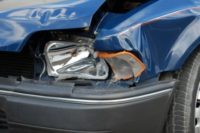An argument against seatbelt laws, strategies for coping with a workplace shooter and accusations of “unprecedented vitriol” against Republican lawmakers all made appearances in the ISHN Blog this year. Here’s a sampling of passionate voices from the EHS community:
Money – safety incentives
A topic that never seems to go away is safety incentives. One of our Safety Perception Survey questions deals with the concept of whether employees would work more safely if they were paid more for doing so? Once again today a customer posed this question as it is a frequent battleground for the 900 or so separate organizations they are responsible to assist with safety.
My opinion on the matter continues to undergo some adjustment as I work with various...Read more>>
The rise of the safety extremist
By Phil La Duke
I write provocative material. I deliberately try to elicit a visceral response and take people to a place where they can explore their deepest held beliefs and question basic ideologies of safety. The latest in neuroscience suggests that our decisions or made and our ability to change reside deep in our subconscious beneath our defenses. When something strikes a nerve at that level it can be difficult to have a rational conversation, but in general, if one can at least reconsider one’s belief set maybe it’s worth it.
Why is it important to reexamine our deepest held beliefs?
Because the world is a dynamic place and if our beliefs are static we become increasingly out of touch. If we cling blindly to our beliefs and lash out to anyone who threatens our worldview. We run the risk of...Read more>>
I2P2 will be the scourge of the “best” safety programs
There was a statement in a commentary in the Wall Street Journal a couple of months ago:
"A fundamental principle in medicine is that if you get the diagnosis wrong, you'll probably apply the wrong therapy. A corollary is that if the therapy isn't working, increasing the dose may make things worse."
This was from a former medical practitioner commenting on the government's regulatory solutions for health care. But it very accurately by analogy describes the government's approach to safety with I2P2, as illustrated by Dr. Michael's statement reported statement earlier this year to the assembled OSHA staff.
The government has correctly determined that the reason for the problem of persistent high injury rates is absence of safety management systems, structure and processes. The government has completely misdiagnosed the underlying (real) reason for that problem---which is:...Read more>>
“Safety Culture” needs a shave: Get talking
The term "Safety Culture" has become like the term "Engagement" in popular management writings. There is no common agreement on the term.
We are left with (mis)interpretations of terms like “Safety Culture”, which lead to haphazard attempts at changing organizations toward improvement. Thus, the term has been begun to diffuse into meaninglessness like so many good-ideas-turned-fad before. This is too bad because the real concept of Safety Culture is profound and can lead to significant improvements.
I'm a psychologist so I'm used to being around terms constructed to describe things that are not concrete. The term "Culture" has been over studied in industrial/organizational psychology and all we were left with was an argument over the difference between "Culture" and "Climate." Even as a psychologist, I had a big problem getting my arms around...Read more>>
Is your employee safety incentive program as obsolete as the eight-track?
By Eric Glass
You may or may not be old enough to remember, but eight-track tapes were a technological wonder back in the ‘70s, and anyone who was cool had one. At the time, it was hard to imagine this state-of-the-art audio technology could ever be replaced or improved upon.
That was then, this is now. The eight-track became obsolete when cassette tapes came along, only to be quickly replaced by CDs, and now by MP3 players and other digital media.
If you have an incentive program based on zero accidents or zero recordables, your safety and health incentive programs are no different than the eight-track tape...Read more>>
OSHA’s newest compliance officers – your employees
A fundamental right afforded by the Occupational Safety and Health Act is the right to report safety concerns without fear of reprisal or retribution of any kind. OSHA’s Whistleblower Protection Program was established to investigate alleged violations of this right. These facts and figures highlight recent efforts to promote and protect employee reporting rights:
- 5 percent per year = Average annual increase in whistleblower complaints filed since 2005
- $14.8 million = Remedies secured for whistleblowers in Fiscal Year 2011
- 5,248 = Estimated number of whistleblower complaints OSHA will be asked to investigate in 2013
- 203 = Average number of days required to investigate OSH Act whistleblower complaints
My first thought after learning OSHA intended to decrease enforcement spending by $6.7 million and increase whistleblower program spending by $4.9 million: “OSHA finally realized…” Read more>>
More than a thousand lives lost in vain
By Dave Johnson
“We suffer in this age from an indifference toward criminality and a callousness to catastrophe when it comes to poor and working people.”
That quote comes from retired Princeton professor Dr. Cornel West in a recent interview in the London-based newspaper The Guardian. Dr. West has been called the firebrand of American academia for almost 30 years. He is black, with an old-school afro flecked with steel grey, dresses in immaculate three-piece suits, and refers to people around the world as if they belong to one family, using the old school “brother” and “sister” reference, as in “our sisters in Sweden” and “our brothers in Poland and Bulgaria.”
Dr. West is a rock star in academia, having written 19 books, edited another 13; he is a regular TV pundit and co-star of a popular U.S. public radio show. He has graduated and taught at both Harvard and Princeton, and will expound on just about any topic: race and politics, philosophy, literature, jazz, hip hop, history, current events, etc.
I say “Amen Brother West” to his quote about today’s callousness to catastrophe when it affects the poor and working people. So true.
How’s that?...Read more>>
Run, Hide, Fight: Responding to an active shooter
By Bo Mitchell
Since Sandy Hook, I get asked daily about "RUN, HIDE, FIGHT," the new response to an active shooter on a campus or in a workplace.
Let's start with some facts for context:
- Campus shootings are not increasing. U.S. government studies show the number of incidents have held steady or decreased over the last two decades
- Campus violence is workplace violence. Schools and colleges are workplaces before they are campuses
- Workplace homicides are down dramatically over the last two decades
- Workplace violence of all calibers except homicide are on the increase. Harassment to assault to robbery and rape are much more likely than homicide.
So, how does "RUN, HIDE, FIGHT," add to this conversation?
Mother Mitchell always told me, "Bo, for every complex problem, there is a simple solution--that is always wrong." Her wisdom applies here.
Police response has changed since Columbine. Police no longer wait for backup. They FIGHT immediately to stop the carnage.
So, should civilians, too, FIGHT shooters at work or at school? Not as a first step, and really almost never. Very few civilians have the training to successfully FIGHT a shooter.
But, this gets complex.
RUN, HIDE, FIGHT have been the standard responses forever to...Read more>>
“Don’t wear seat belts for safety”
"I would rather be in charge of my choices"
By Richard Fern
I read your rules article in the March 2013 issue of ISHNand would add that someone should point out the dangers of seat belts. My philosophy is that everything in life is a trade off. You say wear the beat belt for safety. I say don't wear the seat belt for safety.
There are three things that make the seat belt unsafe. They are fire, water, and just being upside down.
First, with fire, you will be stuck in the belt and unable to remove yourself. I had a step brother who was coming back from Los Angeles to Modesto, California. On the way, he fell asleep and crashed into a tree. His pickup burst into flames. A young man, at a service station close by, came to the rescue. He opened the pickup door and reached in to pull out my step brother. The fire was too hot, and he had to back off and watch my step brother burn to death. So much for safety of the belt!
Some years later a group of six young people were...Read more>>



